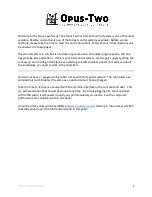
14
Maintenance
Troubleshooting
PROBLEM
Excessive liquid flowing out of vent to spit tank.
Scenario 1: Solenoid not closing.
• Check S3 solenoid wiring.
• Measure resistance across S3 solenoid. Value should
read approximately 15
ω
. If not, replace S3 sole-
noid.
• Inspect S3 solenoid for blockage. Refer to disassem-
bly instructions.
• LectroCount CPU failure. Replace CPU board.
Scenario 2: Optical Sensor not functioning.
• Check optical sensor wiring.
• Measure resistance between the RED and WHITE
wires. Value should be approximately 10k
ω
. If not,
replace optical sensor.
• LectroCount CPU failure. Replace CPU board.
PROBLEM
No liquid flowing through meter during delivery.
Scenario 1: Liquid level not rising in optical air elimi-
nator.
• Check S3 solenoid. It may not be opening to allow
air/vapor to vent.
• Check S3 solenoid wiring.
• Measure resistance across S3 solenoid. Value should
read approximately 15
ω
. If not, replace S3 sole-
noid.
• Inspect S3 solenoid for blockage. Refer to disassem-
bly instructions.
• LectroCount CPU failure. Replace CPU board.
Scenario 2: Meter outlet valve not opening
• Check wiring of the outlet valve S1 solenoid.
• Measure resistance across S1 solenoid. Value
should read approximately 15
ω
. If not, replace S1
solenoid.
• Inspect S1 solenoid for blockage. Refer to the manual
which accompanies the valve.
• LectroCount CPU failure. Replace CPU board.
Optical Sensor
If the optical sensor ever needs replacement, use a 1”
open end wrench to remove the optical sensor from the
housing. When installing a new optical sensor, care should
be taken not to exceed a torque of 75 in-lbs (8.5 Nm).
Excessive torque may damage the sensor.
!
WARNING
Before disassembly of any meter or accessory component,
ALL INTERNAL PRESSURES MUST BE RELIEVED
AND ALL LIQUID DRAINED FROM THE SYSTEM IN ACCORDANCE WITH ALL APPLICABLE PROCEDURES
.
Pressure must be 0 (zero) psi. Close all liquid and vapor lines between the meter and liquid source.
Failure to follow this warning could result in property damage, personal injury, or death from fire and/or explosion, or
other hazards that may be associated with this type of equipment.
A light coating of grease or anti-seize
lubricant should be applied to the threads
of the sensor prior to assembly.


































